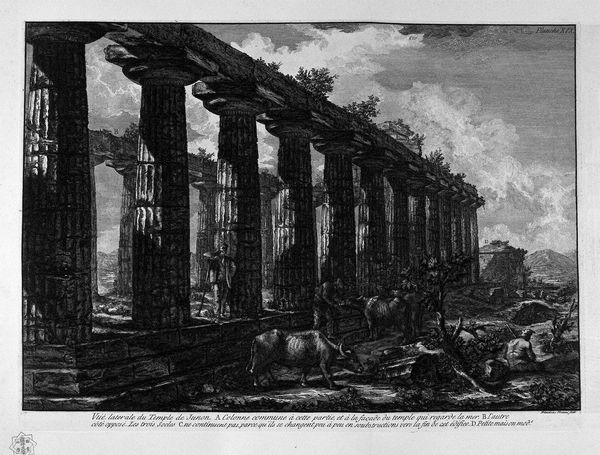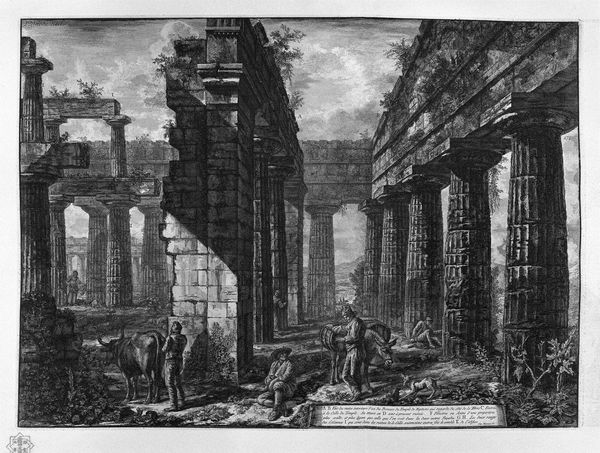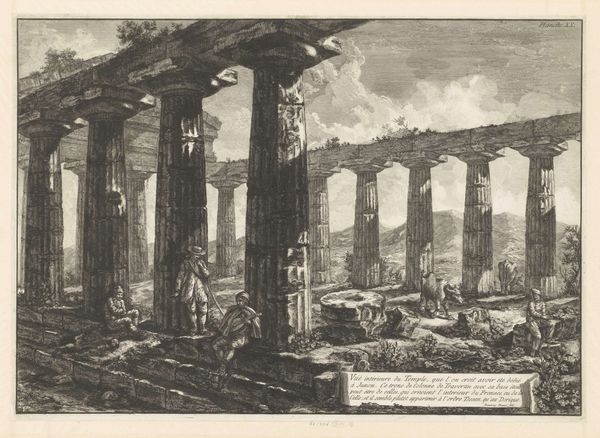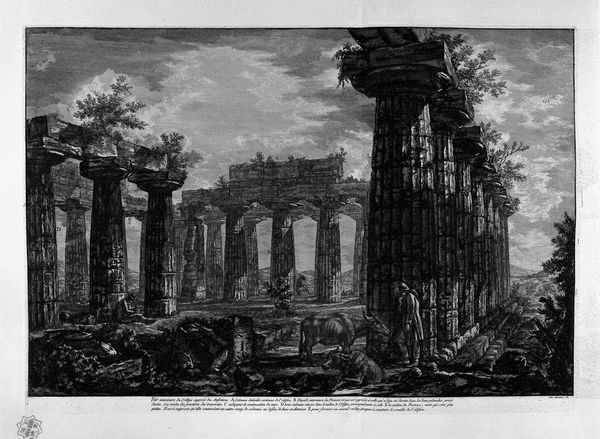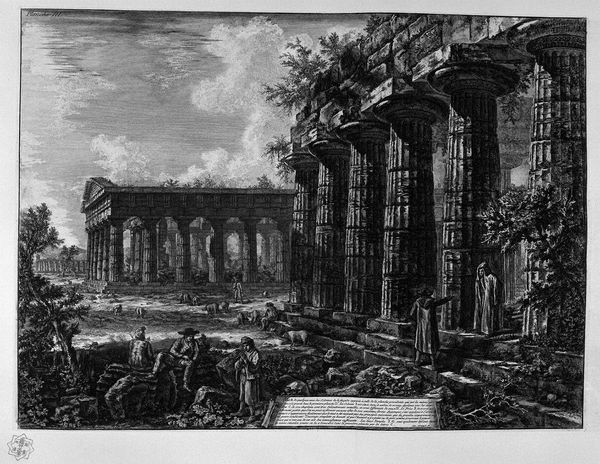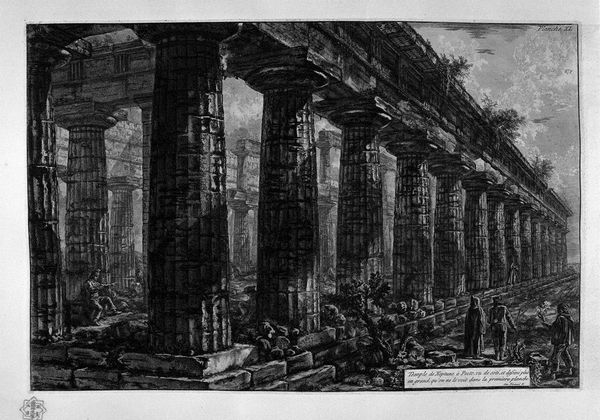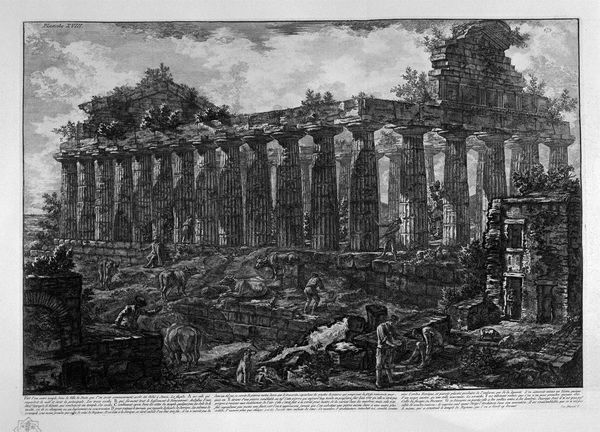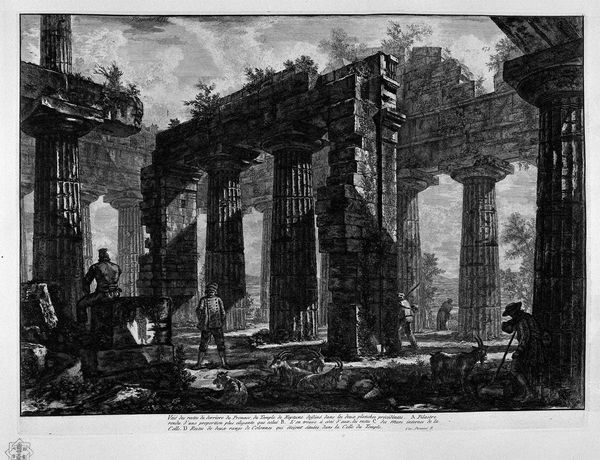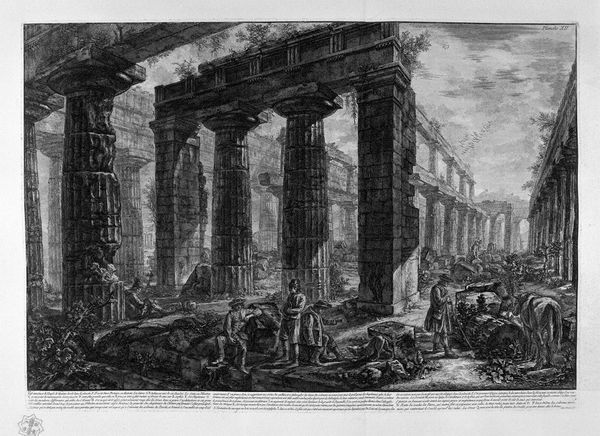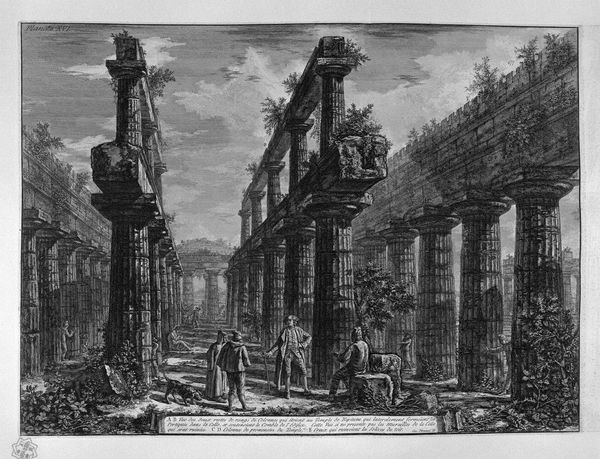
drawing, etching, charcoal, engraving, architecture
#
drawing
#
etching
#
landscape
#
charcoal drawing
#
charcoal art
#
column
#
romanticism
#
black and white
#
arch
#
line
#
charcoal
#
charcoal
#
engraving
#
architecture
Copyright: Public domain
Curator: What a brooding image! Giovanni Battista Piranesi's "Inside the Temple" seems to exude an almost palpable weightiness and shadow. Editor: Indeed. It's one of Piranesi's famous architectural etchings, utilizing charcoal and engraving techniques to render this ruined temple scene. Piranesi was deeply fascinated by Roman antiquity, and it's visible in every line. He clearly highlights not only the final building, but its materiality, its ruin, and decay as a historical process of transformation. Curator: That's true. You really get a sense of the scale of the Roman project here, too. He employs such dramatic perspective! I am curious about the people though – note the figures dotted within. What purpose do you imagine they play in the scene? Editor: Well, typically, he would include those figures as staffage; they were there as both to populate the landscape, yes, but more importantly to communicate scale. Also think about it, Rome was *the* subject to be painted for almost three centuries by the time this artwork was created, it’s possible that his intention for creating these pieces and selling them would have been influenced by that tradition as well, don’t you think? Curator: It's about audience consumption, isn't it? Rome and ruins were effectively commodities by Piranesi's time, weren’t they? It all feels very Romantic with its sublime sense of ruin. Did the prints command a good price at that point, I wonder? What was their place in the broader artistic economy? Editor: Prints such as this would be available to those making the Grand Tour but who maybe couldn't afford larger artworks; they were a democratisation of sorts of the consumption of the image of Rome. The success of the print runs funded Piranesi's workshop and other archaeological investigations. It shows that artworks weren't simply beautiful works for galleries, but goods in a growing system of culture and education. Curator: That reframing allows me to re-engage with the humanism so intrinsic within a Romantic reading. So, ultimately, that shadow becomes part of that story: a record of changing fortunes. Editor: Absolutely, the piece demonstrates how architecture becomes intertwined with human actions and legacies, shifting its role from mere buildings to sites of cultural memory and potential historical analysis.
Comments
No comments
Be the first to comment and join the conversation on the ultimate creative platform.
